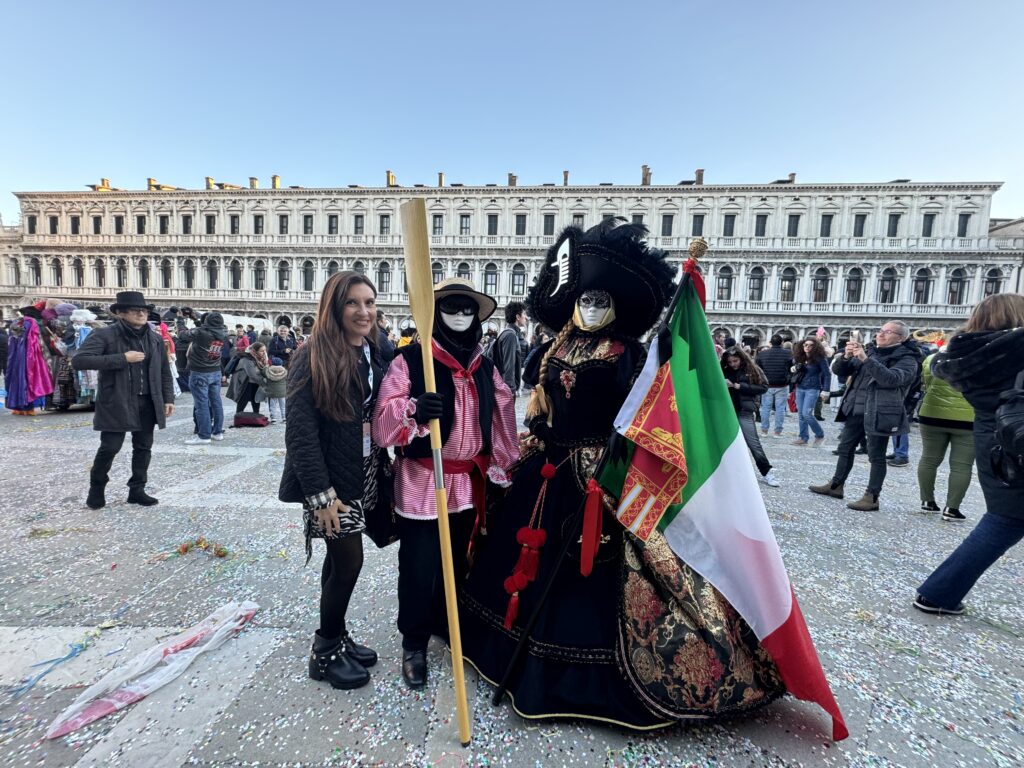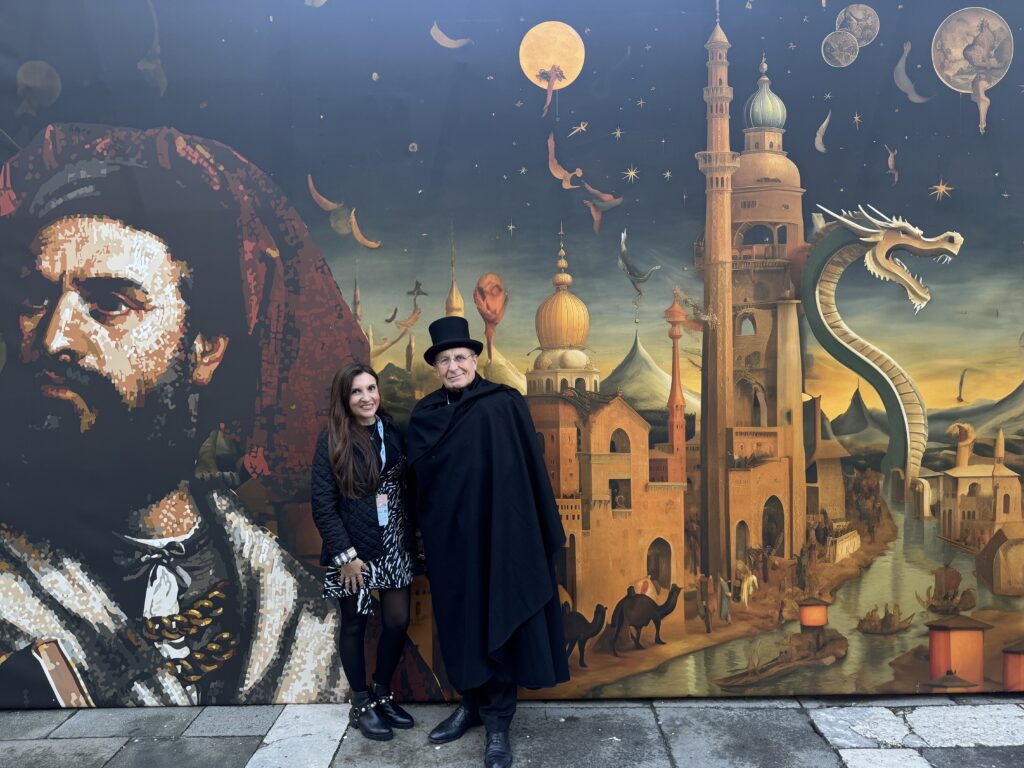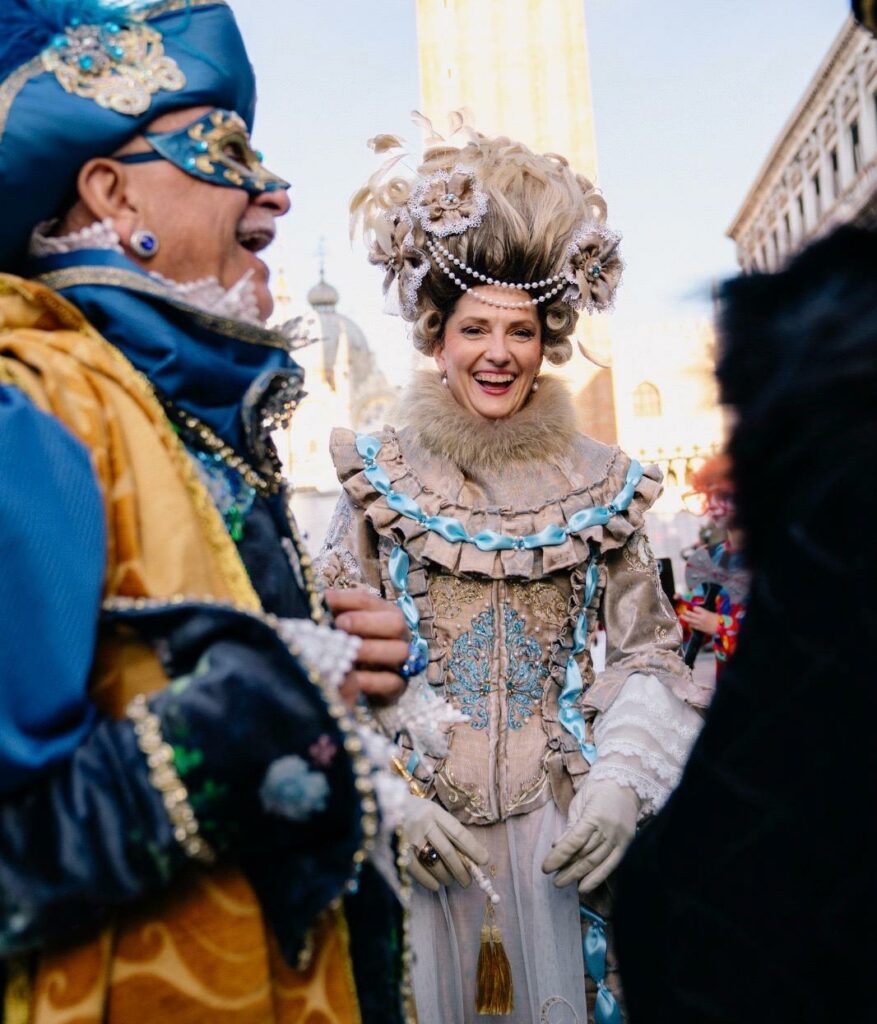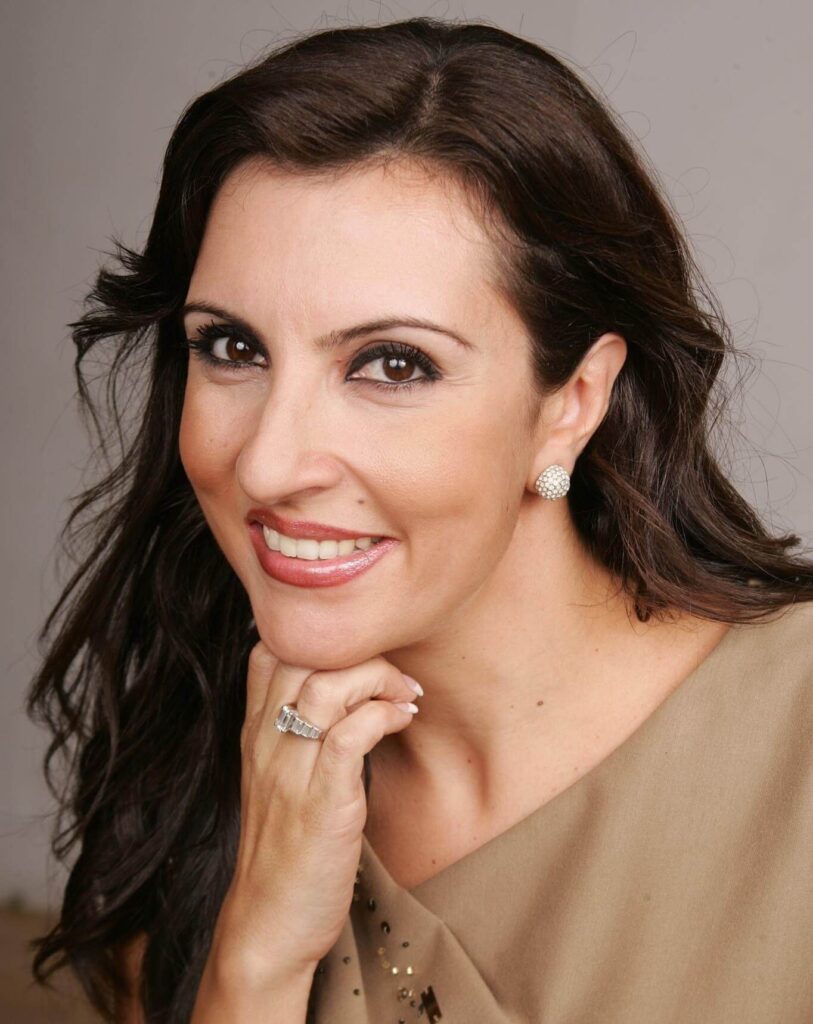Q&A Interview with Venezia Unica President
By Silvia Davi, April 2024
As I reflect upon this past winter season, a highpoint for me was experiencing this year’s Carnevale di Venezia. I am delighted to have at last uncovered the mystery behind one of the most iconic Venetian celebrations, Although I have traveled to Venice (and most of Italy) experiencing all its wonders. this was the first-time I was in Venice during the Carnival period, and it was truly captivating! Being in the city for Carnevale provided an extraordinary journey into Venice’s past and present, filled with mystery, history, and extravagance.
Venice is known as a magical and exceptional city and the Carnevale is simply a part of its fabric providing a backdrop for locals and visitors to take a journey through time in a world of mystery, and revelry. Wandering through the winding streets of Venice, adorned with colorful banners, lights and bustling with excitement, one can’t help but feel enchanted by its atmosphere. But the Carnival is not just a journey into the past; it’s a living, breathing celebration that continues to thrive in the modern world.

Delving deeper into the heart of the Carnival, one is transported to the “Golden Age” of Venice, the 18th century, when the city was at the height of its splendor. Elaborate masquerade balls held in majestic palaces, masked parties in the campi, and grand processions along the city’s canals filled the streets with music, laughter, and extravagance. It’s a scene straight out of a fairy tale, where reality blurs with fantasy, and every corner holds the promise of adventure and delight.
A Venetian knows that Carnival is approaching when the first frittelle (sweet fried pastries) are out on the bakeries’ shelves. Kids are out of school, waiting to dress up and throw confetti all over the streets, but only one thing symbolizes the official start of it all: Il Volo dell’Angelo. The most iconic event which fills up Saint Mark’s Square with people from all over the globe, who are then struck by the timeless allure of the carnival. From the intricate masks and costumes that adorn the faces of participants to the lively street performances, art exhibitions, and culinary delights that fill the city, the Carnival is a testament to the enduring spirit of celebration that defines the Venetian way of life.

A highlight for me was to work on a project with Venezia Unica, the festival’s organizers and partaking in the Fat Tuesday celebration in Saint Mark’s Square! It was also an honor to spend time with the President and Director of Vela Spa, Piero Rosa Salva who explained this year’s Marco Polo theme and Carnevale’s rich history along with his favorite traditions. The following highlights some of Mr. Rosa Salva’s insights:
- What does Carnival mean for Venetians?
The word “Carnival” identifies a period of celebrations in the final phase of winter, which have ancient roots in popular traditions widespread especially in Europe. In the city of Venice these celebrations have already had particular importance in past centuries and were reinstated again in the mid-70s with a program also organized to encourage tourism in the winter period.
For us Venetians, Carnival represents a re-enactment of the glorious history of Venice and an enhancement of the uniqueness of our city, in fact the Carnival in Venice is not a “show” to see but an “experience” to live. During the Carnival period, which always ends on “Fat Tuesday” before the start of “Lent”, the entire city is transformed into an extraordinary stage where everyone is a protagonist and not a spectator. - Can you explain the meaning behind each year’s theme and why Marco Polo was chosen year?
Every year a stimulating “theme” is chosen for the Carnival, which can be a historical or cultural reference or even a “twinning” with another city or nation. Reference is often made to anniversaries that have particular significance for Venice (Wagner in Venice in 1983, Paris in Venice in 1985, Venice and the East in 1994) or to topics of relevance (150th anniversary of the Unification of Italy in 2011, 300th anniversary of the birth of Carlo Goldoni).
This year marks the 700th anniversary of the death of Marco Polo, a fundamental figure in the history of Venice who opened cultural and economic relations between Europe and the entire East, in particular China. - There are so many traditions each year for the festival, what are your favorites?
The Carnival in Venice always has a very complex program which includes shows in theatres, in open spaces and on the water of the canals and lagoon but is characterized above all by the spontaneous performances of people (Venetian or tourists) who dress up and perform while walking for the city.
Personally, events on water particularly move me, perhaps because they represent the essence of Venetianness: our existential relationship with the water that surrounds Venice, and which has always been our “protector” like the walls for other cities. But I also really love events for children which, with their joyful liveliness, give a sign of hope for the future.

In conclusion, although today we see many other Carnival celebrations all over the world it’s important to note that the original and first festival originated in Venice dating back to the 11th century. The Carnival emerged as a period of celebration leading up to Lent, a time when Venetians would cast aside their everyday identities and embraced the freedom of anonymity and social classes behind elaborate masks and costumes. Over the centuries, the carnival has evolved into a grand spectacle of opulence and creativity, attracting nobility, merchants, and artists from across the world. A phenomenal one-of-a-kind experience for all adventure and Dolce Vita seekers!

